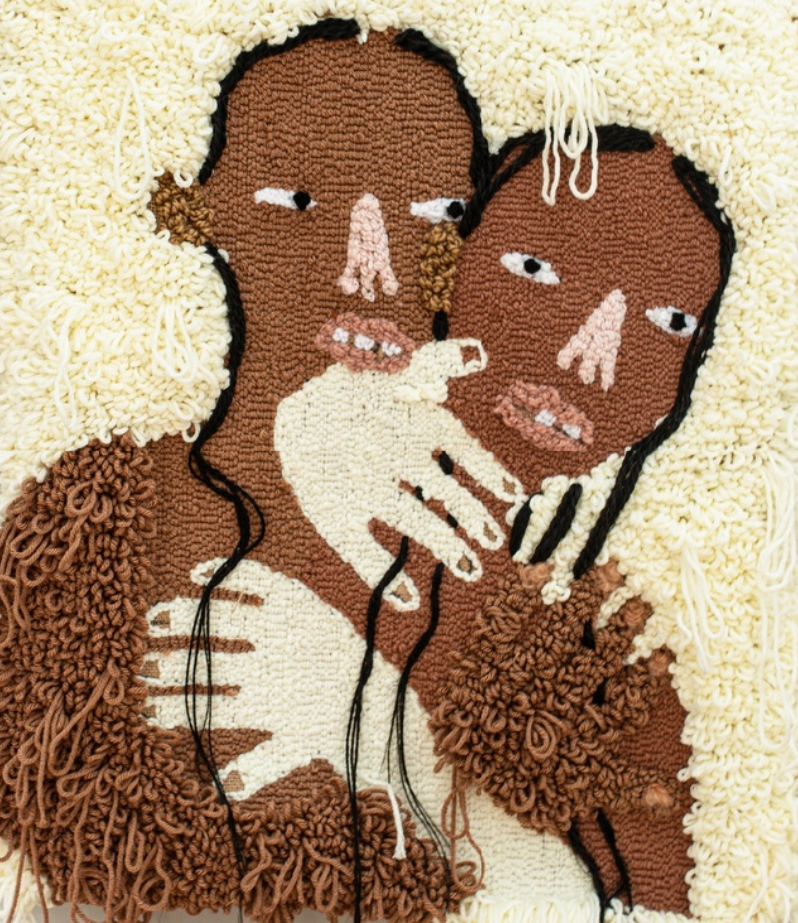Beyond the Canvas
You’re so beautiful and then you’re so ugly by Talia Ramkilawan
5 artworks that caught my eye at London’s 1-54 Contemporary African Art Fair
Amidst the bustling crowds, array of fair booths, and chorus of small talk, London Frieze week marks a major moment in the art world calendar. Yet, for many, the real highlight of the week is 1-54 Contemporary African Art Fair held at Somerset House.
1-54 proudly holds its mantle as the leading art fair dedicated to African art, featuring contemporary works from all over the continent and its diaspora. From acclaimed artists to emerging talents, there's something for everyone. This month, I'm excited to share five artworks that caught my eye at the 11th edition of the fair.
Washed Up on Shore (See Shells, Seashells) by Ryan Cosbert
As I walked through the Embankment galleries at Somerset House, I fell in love with this abstract painting by New York-based artist Ryan Cosbert. Cosbert's practice is heavily informed by colour and texture, which the artist uses to explore politics, historical narratives, and her own self-expression.
This image fails to capture the intricate details of the painting, where miniature sea shells and what appear to be empty bullet shells are interwoven among bold, expressive brushstrokes. These details and fragments tell a powerful story, shedding light on the violence and oppression endured by Black communities in the US.
What I find particularly compelling about this piece is its subtlety. In abstraction, there's a nuanced language that carves out space for ideas that often face censorship when expressed through figurative art.
Concrete (I) by Anya Paintsil
Hair is a central facet of Black womanhood that's so deeply woven into our cultural identity. It was this very connection that initially drew me to the work of Anya Paintsil. The Welsh-Ghanaian textile artist weaves braids and real human hair into her tapestries, as she examines ideas of gender and race.
Employing rug-hooking and embroidery techniques, Paintsil creates playful figurative tapestries that celebrate craft as an art form that exists beyond antiquated ideas of ‘women’s work’. This particular piece depicts two figures in an embrace, symbolising the spirit of sisterhood and community.
For me, Paintsil's tapestries offer a fresh and distinctive perspective, demonstrating the diversity and range within contemporary African art.
Alunamda - Love Knows No Bounds by Lulama Wolf
What immediately strikes me about Lulama Wolf’s paintings is their simplicity. Her flattened compositions harken back to the early Modernist era, yet evoke a profound sense of stillness. Wolf’s paintings draw from the natural elements of the earth, as she blends acrylic paint with the gritty texture of sand.
Incorporating symbolism and employing her signature smearing and scraping techniques, Wolf creates large-scale paintings that delve into African spirituality and the human condition.
What I really like about Wolf's paintings is the delicate dance between figuration and abstraction. In this particular piece, two figures emerge, yet you can just as easily get lost in the rustic hues and subtle details.
You’re so beautiful and then you’re so ugly by Talia Ramkilawan
I’ve been obsessed with Talia Ramkilawan’s tapestries for years. Adorned with acrylic nails and infused with pop culture references, Ramkilawan’s body of work feels confessional and relatable. I saw this particular piece on my first day at the fair and felt compelled to write about it.
In You’re so beautiful and then you’re so ugly, Ramkilawan's subjects bare their midriffs, showcasing matching Calvin Klein underwear. The image could easily be part of an Instagram photo dump – it's got a timely and contemporary quality to it.
With cropped detailing and vibrant colours, Ramkilawan’s intimate tapestries explore her queer identity, family relationships, and trauma. Much like the approach of Anya Paintsil, Ramkilawan uses sewing, rug-hooking, and harnessing techniques to create soft, textured works that defy the conventions of traditional Western oil-on-canvas paintings.
Untitled I by Turiya Magadlela
Turiya Magadlela is another artist that creates her works using fabrics and clothing materials. From tights to correctional service uniforms, Magadlela employs sewing, embroidery, stitching, and folding techniques to craft abstract mixed-media pieces. Her detailed fabric works explore the commodification and colonisation of Black bodies, addressing issues of racial and sexual discrimination in South Africa.
In Untitled I Magadlela applies acrylic paint and stretches nylon pantyhose across her canvas to create an abstract composition. The interplay of layered fabrics and soft hues of pink and lilac evoke an ethereal quality. Although Magadlela’s art-making techniques have historical ties to women, her practice serves as a reclamation of power and identity as a Black woman.
For me, attending 1-54 every year is an empowering experience, and a chance to immerse myself in the company of artists and artworks that proudly celebrate the richness of the African continent. Our shared history is often narrated by others, making it all the more important to experience art and culture through the authentic lens of the African community.
1-54 Contemporary African Art Fair will return to Marrakech from 8-11 February 2024





